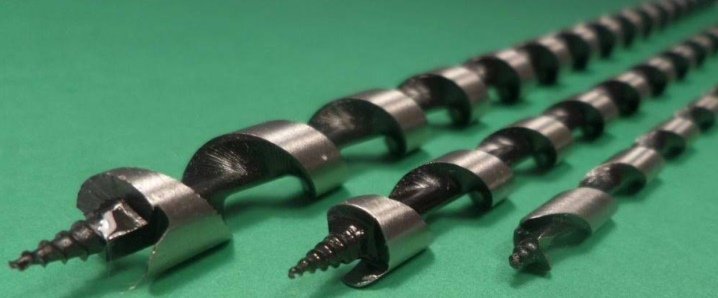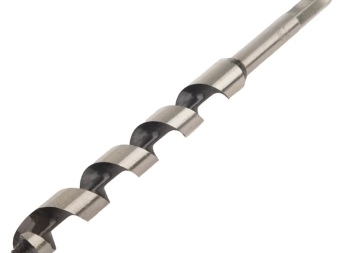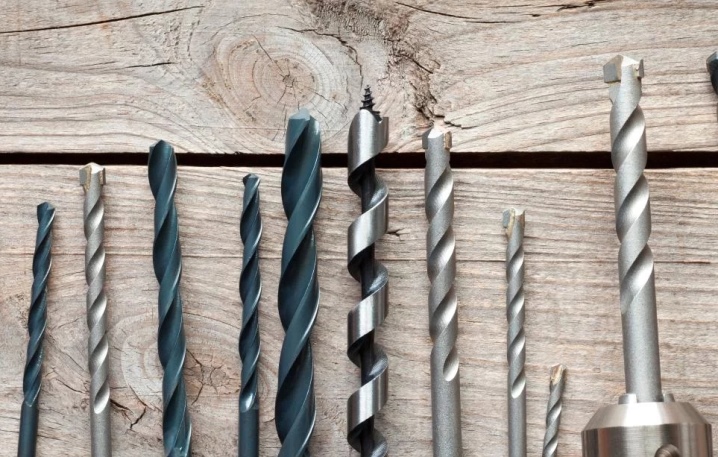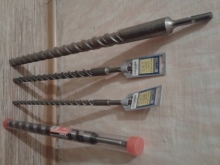All about wood auger drills

A variety of drills are used to create holes in the wood. They vary in size, usage and other factors. We will consider auger (screw) cutting tools, and in particular the Lewis drill.

What it is?
Screw cutting tools have a second name - "wood auger drills", due to the fact that the cutting part resembles an auger, and this makes it possible to efficiently remove chips and waste during drilling.


This group of tools is quite in demand due to its many positive qualities.
- Smooth increase in workload in accordance with the deepening of the drill into the wood.
- Drill length can be up to 600 millimeters, but the most common and best-selling toolkit is 450 millimeters. If you need a longer drill bit for wood, then this option is exactly what you need. With these tools, it is possible to drill holes even in fairly thick wood, at the same time the performance parameters will meet the highest standards.
- The inner surface of the hole is at a high level. Burrs arising during drilling are cut off without residue by means of the side cutting edge and immediately retracted by the screw generatrix of the working side of the cutting groove outward, which also prevents the cutting tool from overheating and increases the service life.
- The set of all sizes is very extensive and ranges from 3 to 52 millimeters in the takeoff run, this is enough to carry out the bulk of the work. To ensure the best performance, the RPM should be monitored. Equally, this indicator depends on the type of wood being processed (there should be a short guide with key performance characteristics on the product box).
- The 6-sided shank makes it possible to firmly hold the drill in the vast majority of chucks.


This group also includes the Lewis drill, which has a snakelike configuration, 10-60 mm in diameter. The main structural element of the auger cutting tool is a powerful auger (spiral) that encircles the main rod.
To plunge the drill into the material being processed at the required point, its working area is equipped with a tapered threaded point. Because the outer surface of the spiral is polished to a mirror image, the inner surface of the hole made is also completely flat. Another characteristic feature of the structure of this toolkit is the slight slope of the groove through which waste and chips are removed from the drilling area.
The Lewis drill has an extensive diameter fork. If you need to make holes with a large diameter, you need to take a responsible approach to the selection of equipment, in tandem with which the cutting tool will be used. In such situations, devices with low speeds should be used, and not an ordinary electric drill, which is not specialized for functioning with large diameter tools.

Principle of operation
The drilling process begins with the fact that a cone-shaped point is pressed into the material (wood), which, when rotated, penetrates into the depth.After that, the base, working part of the cutting toolkit rests on it. In contrast to wood drills of other designs, the tools discussed at the moment have only one working helical groove, and then drilling is carried out with a spiral-shaped cutting part. The increase in the entire length of the cutting helical groove favors a decrease in the overall effect on the central axis of the drill, but increases the risk of the cutting tool "moving away" from the middle and jamming.

To eliminate the first problem, the auger drill can be practiced as a reamer, and the rough cut, in addition to especially deep channels, can be performed using an ordinary drill. As practice has shown, the direct creation of holes using a Lewis drill is rational for diameters no more than 15-30 millimeters.


In other situations, pen drills are used, and twist drills are used exclusively on the finishing pass, when it is necessary to improve the smoothness of the hole walls.
The second problem is solved in this way:
- it is preferable to put the Lewis cutting tool on electric drills with low revolutions of high power;
- such twist drills are impractical to use for drilling holes in hard wood species, since the waste released during this process provokes clogging with chips of a sufficiently long helical groove.
As a rule, the number of revolutions is selected based on the diameter of the cutting tool to the diameter of the hole to be created. In other words, if the diameter of the tooling increases, then the number of revolutions decreases, and vice versa. When using such a cutting tool, the moisture level of the material does not play any role.

Features of operation
The Lewis drill is included in the basic toolkit for professional carpenters. Differing in its low weight, it does not heavily load the electric motor of the drill and makes it possible to make holes of the through and blind type in inaccessible areas: at the corners of the beams, fixing points of overlapping wooden elements, and others.
By means of auger, or screw, cutting tools, the material is drilled along and across its wood fibers without pressure. Length and diameter are dependent on each other. So, for example, the smallest cutting tool in the line, having a diameter of 10 millimeters, has a length of 400 millimeters. The auger drill, which has a diameter of 50 millimeters, reaches 1100 millimeters in length. A feature of the auger drill is its single-thread, which provides the cutting tool with the ability to be pulled into the recess without visible external influence.



It is recommended to work with Lewis drills, already having some experience, because this structure of the toolkit is unusually susceptible to torque moments that heavily load the toolkit.
It should be remembered that the cutting tool must be used with care, trying to avoid kinking during work.


The following video talks about the types of drills for wood.













The comment was sent successfully.